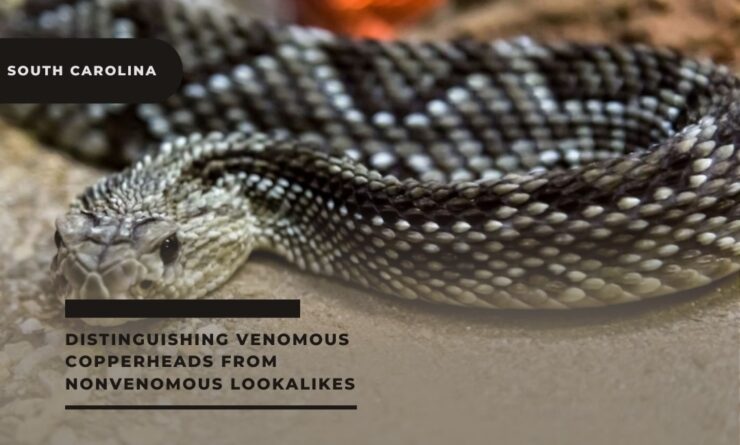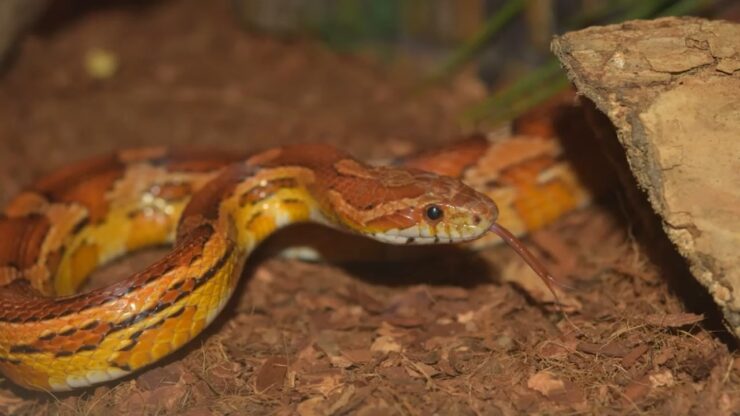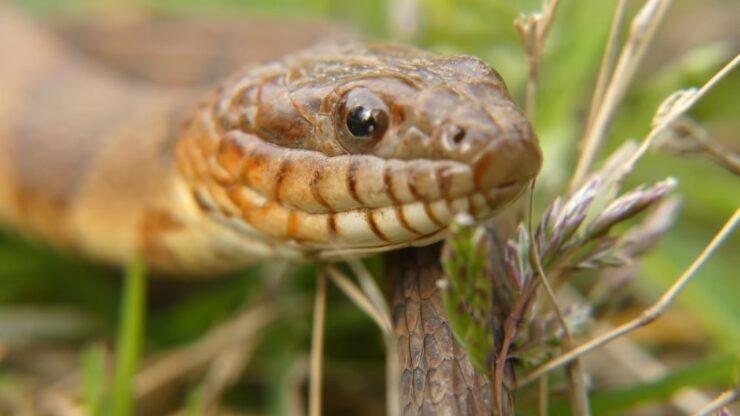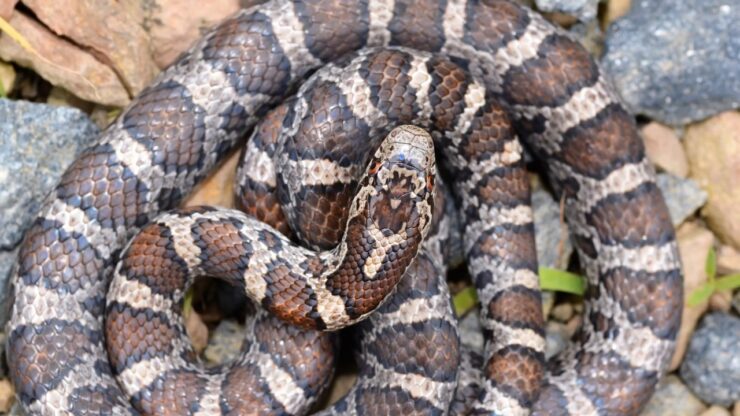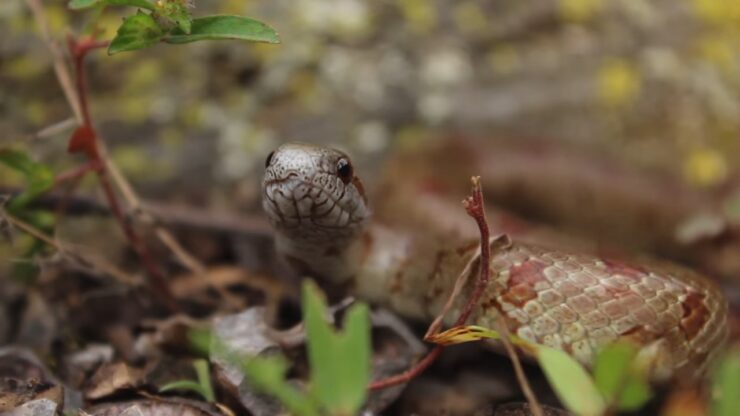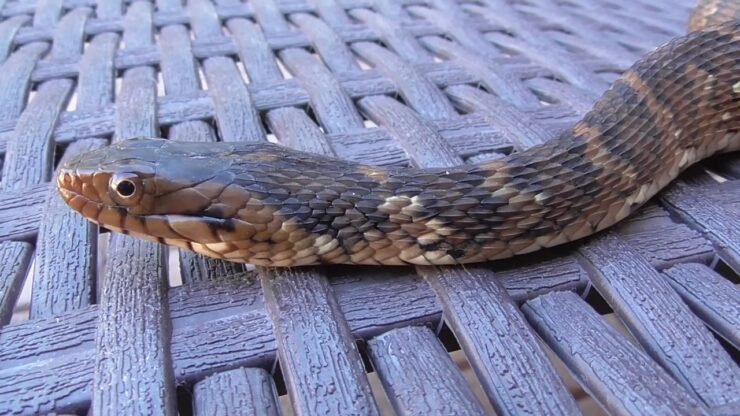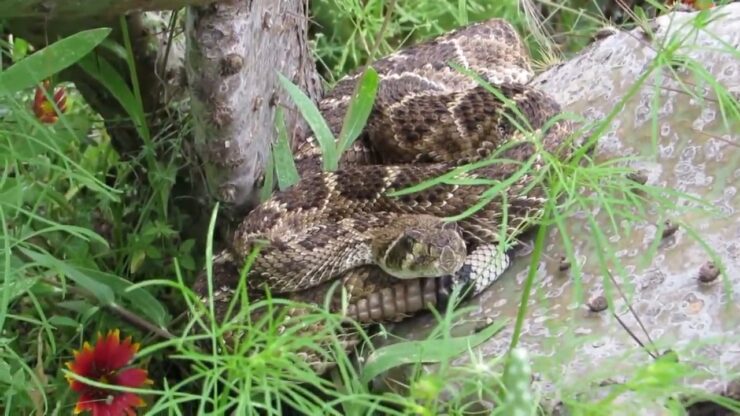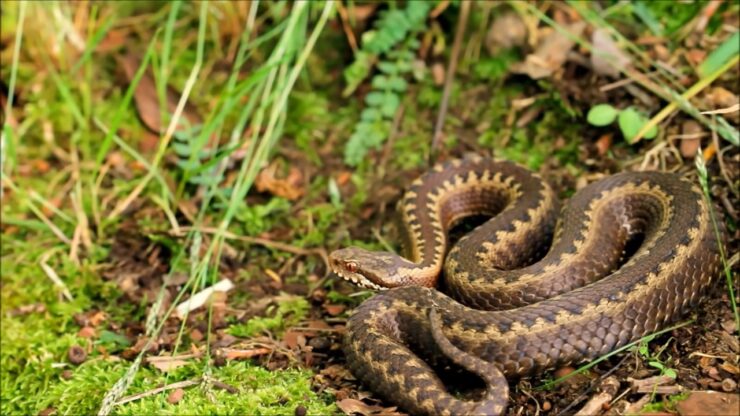South Carolina is home to a variety of snake species, including the venomous copperhead and several nonvenomous species that closely resemble it.
It’s crucial to be able to tell them apart to avoid unnecessary harm to both humans and these beneficial reptiles, which play a key role in controlling rodent and pest populations.
Copperheads, named for their coppery-tan color, are one of six venomous species in South Carolina. They have triangular-shaped heads and can grow up to 4 feet long.
Their most distinctive feature is an hourglass-shaped pattern on their bodies, and they have yellow eyes with black vertical and elliptical pupils.
Several nonvenomous species are often mistaken for copperheads due to their similar appearance. These include the corn snake, northern water , eastern milk, mole king , and banded water.
While these species share some similarities with copperheads, they can be distinguished by differences in their patterns, colors, and physical characteristics.
Key Differences Between Copperheads and Lookalikes
Corn Snake
They are one of the most common nonvenomous snake species mistaken for the copperhead. They lack the flat, wide heads and hourglass patterns that are characteristic of copperheads. Instead, they have a bright reddish color and light bandings across their bodies, which can cause confusion from a distance.
However, a key distinguishing feature of corn snakes is their round pupils, which is a typical characteristic of nonvenomous. They are beneficial to the ecosystem as they help control rodent populations.
Northern Water
The northern water is a large, nonvenomous snake that has a similar pattern and colors to copperheads. However, its pattern includes dark blotches that are narrow on the sides and get wider toward the backbone, which is the opposite of the copperhead’s pattern.
Northern water snakes also have round pupils, another characteristic of nonvenomous. They are often found near bodies of water and play a crucial role in controlling aquatic pest populations.
Eastern Milk
Eastern milk snakes are most commonly found in mountain forests. They have a similar pattern and coloration to copperheads, but they lack a uniform hourglass pattern. Instead, their coloration is brighter, with more red than brown hues.
Eastern milk are nonvenomous and are known to be beneficial for controlling rodent populations. They are often mistaken for copperheads due to their similar appearance, but their brighter coloration and different pattern can help differentiate them.
Mole King
Are nonvenomous snakes that constrict their prey instead of using venom. They mainly hunt small rodents and prefer to live underground, hence their name.
Mole king snakes have light, glossy brown scales with dark brown blotches, making them appear similar to copperheads. However, they are smaller and thinner than copperheads and have smaller, angled heads. They are beneficial to the ecosystem as they help control rodent populations.
Banded Water
They are nonvenomous snakes that have a similar reddish-brown coloration to copperheads. They are often found near bodies of water and can sometimes cross paths with copperheads, which also enjoy living in South Carolina swamps.
Banded water snakes lack the hourglass pattern of the venomous copperhead and have much smaller heads. They are beneficial to the ecosystem as they help control aquatic pest populations.
Thought-Provoking Questions and Insights
Understanding Behavior
Understanding the behavior and habitats of different snake species can significantly reduce unnecessary encounters and potential conflicts. Each species has unique behaviors and preferred habitats. For instance, some snakes are more active during the day, while others are nocturnal.
Some prefer to live near water bodies, while others are more likely to be found in forests or fields. By knowing where and when certain are likely to be present, people can take precautions to avoid disturbing them. Additionally, understanding behavior can help people react appropriately during encounters, reducing the risk of bites.
Conservation Efforts
Nonvenomous snakes play a crucial role in the ecosystem. They help control rodent and pest populations, which can otherwise cause significant damage to crops and property. Furthermore, they are a food source for other wildlife, contributing to the overall biodiversity and health of the ecosystem.
Conservation efforts can protect these by preserving their natural habitats, implementing laws against killing them, and promoting research to better understand their needs and behaviors. Such efforts not only protect the snakes but also contribute to the overall health and balance of the ecosystems they inhabit.
Public Education
Public education can significantly reduce fear and promote coexistence between humans and these important reptiles. Many people fear snakes due to misconceptions and lack of knowledge about their behavior and the role they play in the ecosystem.
Educational programs can dispel these misconceptions by providing accurate information about them, teaching people how to identify different species, and explaining what to do in case of an encounter. By fostering understanding and respect, public education can promote peaceful coexistence and contribute to conservation efforts.
Conclusion
In conclusion, understanding the differences between venomous and nonvenomous snakes, particularly those that closely resemble each other, is crucial for both human safety and the preservation of these important reptiles.
Each species, from the venomous copperhead to the nonvenomous corn, northern water, eastern milk, mole king , and banded water snake, plays a vital role in maintaining the balance of our ecosystems, primarily by controlling rodent and pest populations.

